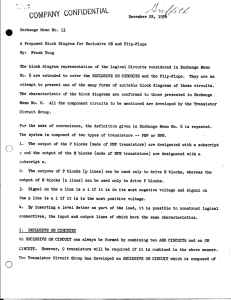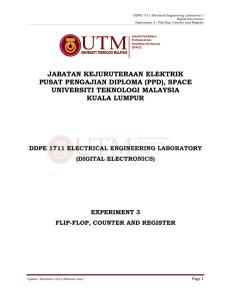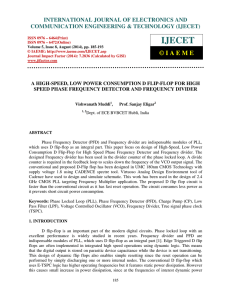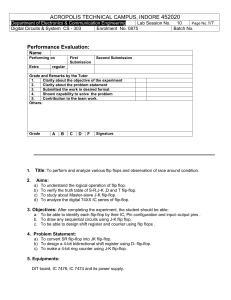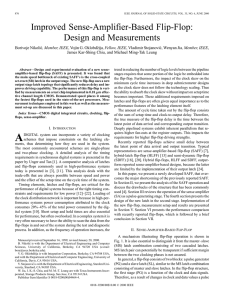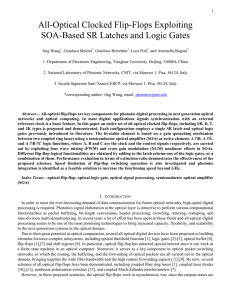ELEC 5270/ELEC 6270 Low-Power Design of Electronic Circuits Total 25 points
advertisement
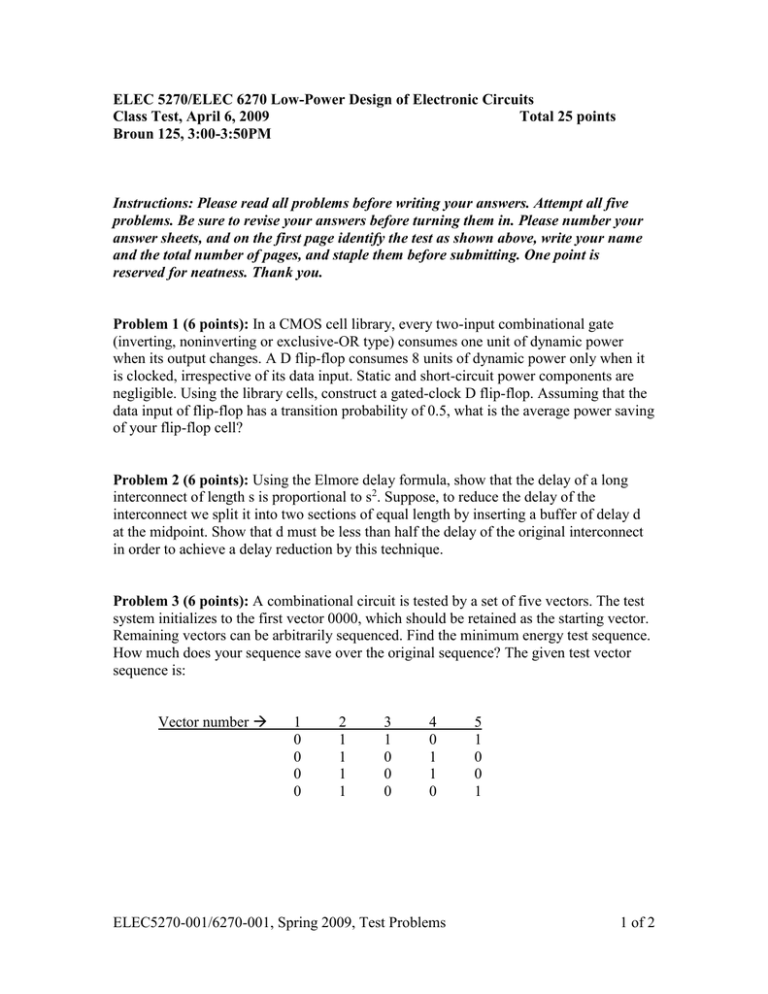
ELEC 5270/ELEC 6270 Low-Power Design of Electronic Circuits Class Test, April 6, 2009 Total 25 points Broun 125, 3:00-3:50PM Instructions: Please read all problems before writing your answers. Attempt all five problems. Be sure to revise your answers before turning them in. Please number your answer sheets, and on the first page identify the test as shown above, write your name and the total number of pages, and staple them before submitting. One point is reserved for neatness. Thank you. Problem 1 (6 points): In a CMOS cell library, every two-input combinational gate (inverting, noninverting or exclusive-OR type) consumes one unit of dynamic power when its output changes. A D flip-flop consumes 8 units of dynamic power only when it is clocked, irrespective of its data input. Static and short-circuit power components are negligible. Using the library cells, construct a gated-clock D flip-flop. Assuming that the data input of flip-flop has a transition probability of 0.5, what is the average power saving of your flip-flop cell? Problem 2 (6 points): Using the Elmore delay formula, show that the delay of a long interconnect of length s is proportional to s2. Suppose, to reduce the delay of the interconnect we split it into two sections of equal length by inserting a buffer of delay d at the midpoint. Show that d must be less than half the delay of the original interconnect in order to achieve a delay reduction by this technique. Problem 3 (6 points): A combinational circuit is tested by a set of five vectors. The test system initializes to the first vector 0000, which should be retained as the starting vector. Remaining vectors can be arbitrarily sequenced. Find the minimum energy test sequence. How much does your sequence save over the original sequence? The given test vector sequence is: Vector number 1 0 0 0 0 2 1 1 1 1 3 1 0 0 0 4 0 1 1 0 ELEC5270-001/6270-001, Spring 2009, Test Problems 5 1 0 0 1 1 of 2 Problem 4 (6 points): Consider the multiplexer circuit in the following schematic. The numbers in gates and buffers show their delays in time units. The input changes shown occur simultaneously. If each gate or buffer consumes 1 unit of dynamic energy per output transition then determine the total dynamic energy dissipation for the given input signals. Prove that the number of transitions at the primary output cannot exceed four for any set of hazard-free primary input transitions caused by an input vector-pair. 01 1 10 3 1 1 1 10 7 Problem 5 (Bonus Question): (2 points) In Problem 3, the starting node is given as “1”. Devise a branch and bound tree search algorithm to find the shortest Hamiltonian path. ELEC5270-001/6270-001, Spring 2009, Test Problems 2 of 2



